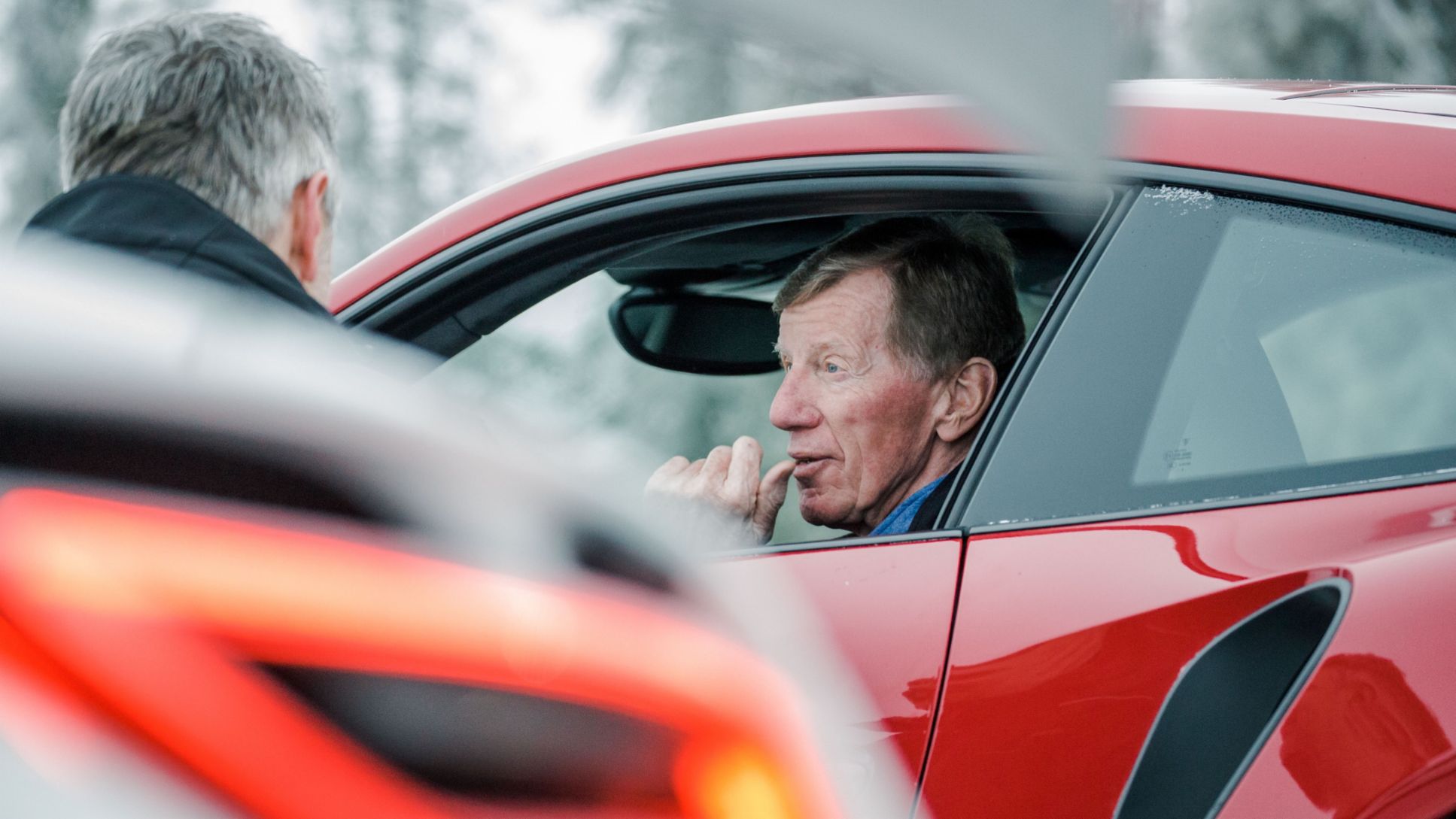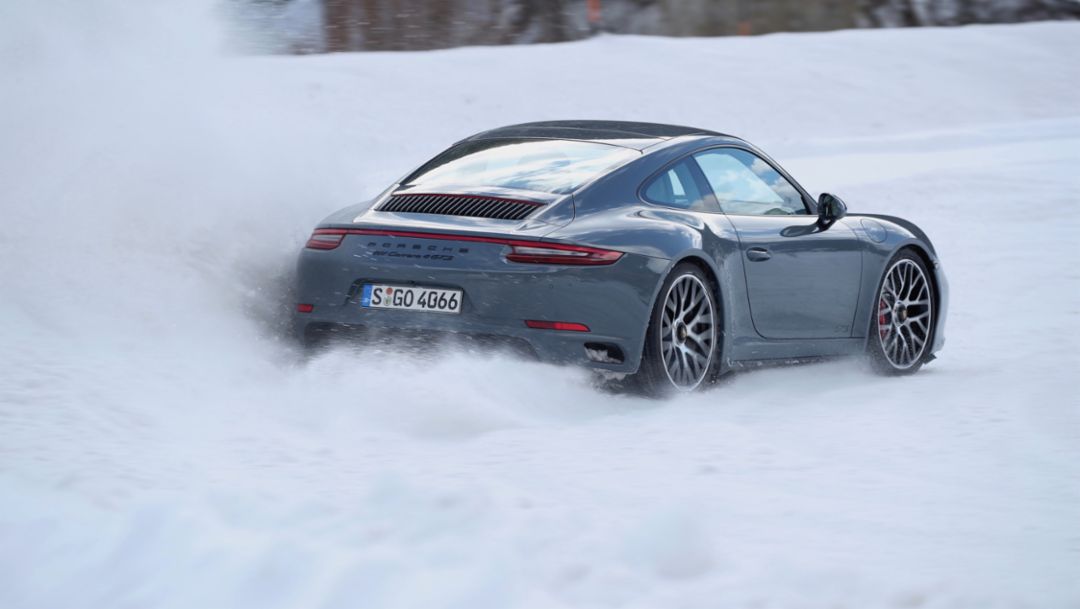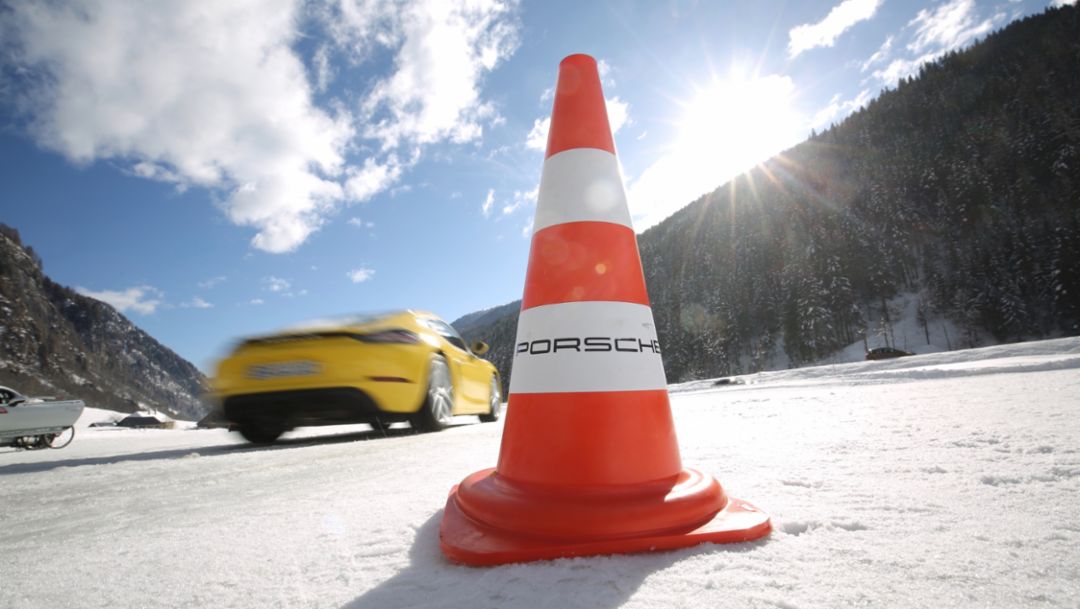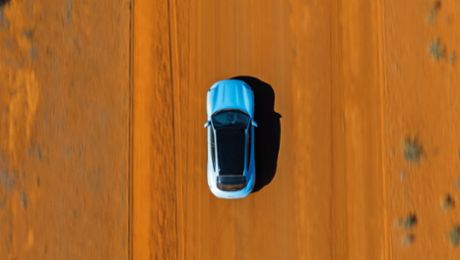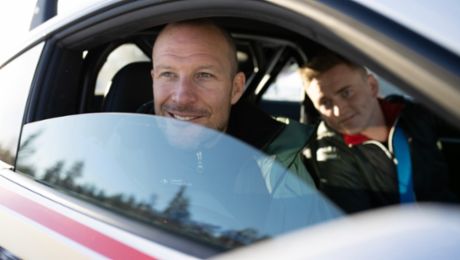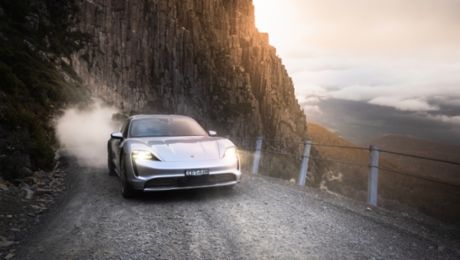My fellow rally drivers have the same opinion as I do, that only when a vehicle is in an unstable condition can driving become something similar to an art form. For active motorsport racers, driving like this is basically part of their everyday, whereas ordinary drivers should regularly practice in these types of conditions so that they can learn about safety measures and how to control a vehicle.
Ideally, drivers should attend special winter driving courses for this purpose, such as those also offered by Porsche Driving Experience. These unstable driving conditions occur far more frequently on icy and snowy surfaces than on asphalt or concrete due to the significantly lower friction value. The rear tyres lose their directional control much faster, and the vehicle will skid. But don't panic. Such conditions can be simulated much better on ice and snow than on asphalt – as the speeds are much slower, everything seems to happen in slow motion. You can practice driving in these sorts of conditions extensively at an appropriate training ground. We held a course like this in the Austrian state of Salzburg.
The golden rules for driving on ice and snow
As you would expect, some golden rules always apply: Adjust your speed (which means slow down), and fit winter tyres with a coarser profile and a softer rubber compound to give your vehicle significantly more grip. You can experience the sliding spectrum (albeit the lower end) through a few practice exercises, including a slalom on ice, a circuit, brake test and a handling track. Generally, a car in an unstable condition is controlled not only using the steering wheel, but also the accelerator pedal. Just one tap on the accelerator while on ice is all it can take for the rear tyres to lose directional control and the rear to skid outwards. The slalom offers a very good chance to practice as you navigate around the cones.
The front wheels need to be pointing straight ahead, and then you press the accelerator – but don't just resort to pointless action, such as frantic counter-steering, as this can lead to a loss of control at the rear. In the interplay between the accelerator and brake, tiny movements can make a huge difference: Press the accelerator gently, then steer and counter-steer carefully. The rear will then swing back in the opposite direction, triggering the next change of direction.
Virtually all Porsche models are offered with intelligent all-wheel drive, and the different drive concepts – front engine, mid-engine, rear engine – offer plenty of opportunity to get to grips with driving dynamics and physics. While the front-engine models naturally tend more towards understeering (which means that the vehicle slides forwards via the front wheels), mid-engine and rear-engines models are much more agile, and as a result are also more skittish. The circuit is a good place to practice controlled drift, which manifests very differently with the intelligent all-wheel drive system than it does with a pure rear-wheel drive.
Practice makes the difference
In my rally vehicles with (rigid) all-wheel drives, I had to learn left-foot braking to avoid understeering. Thanks to modern control technology, a lot can be done with the accelerator pedal: With one tap on the accelerator, the rear slides out and we begin to drift, but we can control the radius and speed with the accelerator.
At the end of the day, practice makes the difference: Once conditions become unstable you can see who really has their vehicle under control. After a day of intensive training on the ice and snow, it should always be all of the course participants.
Consumption data
911 Carrera 4 GTS: Fuel consumption combined 9.5 – 8.5 l/100 km; CO2 emissions 216 – 192 g/km
Macan Turbo: Fuel consumption combined 9.2 – 8.9 l/100 km; CO2 emissions 216 – 208 g/km
